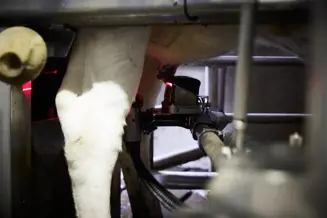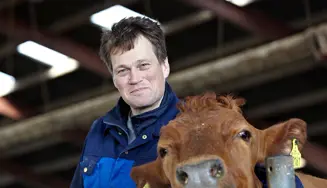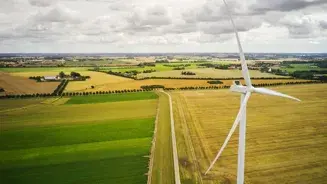Our Arla farmer owners believe that animal welfare, sustainable farming and high productivity can go hand in hand. All it takes is the right technology and a deep-felt respect for the environment and the animals you work with.
Learn more about how our farmers use technology to improve sustainability.
Welfare tech for cows
Arla farmers have some of the world’s most state of the art farms and have made substantial investments in technology to improve sustainability. Every day across the globe many of our farms use advanced robots to take care of milking, as well as unique monitoring systems to ensure soothing lighting and lots of fresh air for the cows. Feed can be dosed and delivered automatically to give the cows exactly what they need, when they need it, to reduce waste and ensure that animals are well-fed at all times.

Making time to care
Automizing time-consuming tasks, like milking and feeding the cows, allows farmers more time to care for the cows. This is not only good for the animals, but also for the business – because healthy and happy cows produce more milk. And milk of a better quality. “If something is off or a cow is not feeling well, we’re able to detect it immediately and do something about it before it turns into a problem,” says Peter Bendix, Arla Farmer Owner.

The technology gives us the time we need to focus on the wellbeing and welfare of each animal. There’s more time to care for the cows and that makes a substantial difference.
Peter Bendix, Arla Farmer owner
Down with CO2e
Arla farmers are dedicated to reducing their CO2e footprint and regularly work on initiatives to cut energy consumption. For example, surplus heat from air compressors can be recirculated to personnel facilities; LEDs can replace traditional light bulbs and on many farms liquid manure goes through an acidification process to bind the ammonia to the manure, reducing CO2e emissions. All over Europe, more and more of our farms are powered by renewable energy sources, like wind, solar energy and biogas – and many grow their own animal feed, minimizing the need to transport feed over long distances.
“We are close to self-sufficient when it comes to feed. We produce grass, corn and other protein-rich sources of animal feed,” says Laust Bendix, Arla Farmer Owner.






